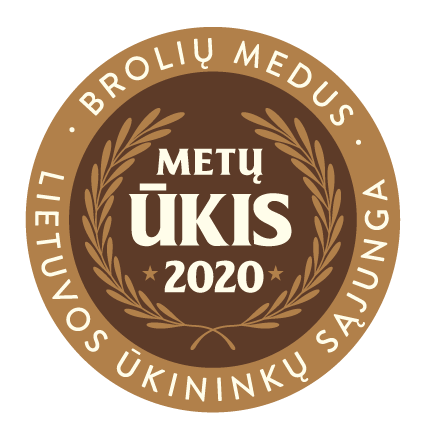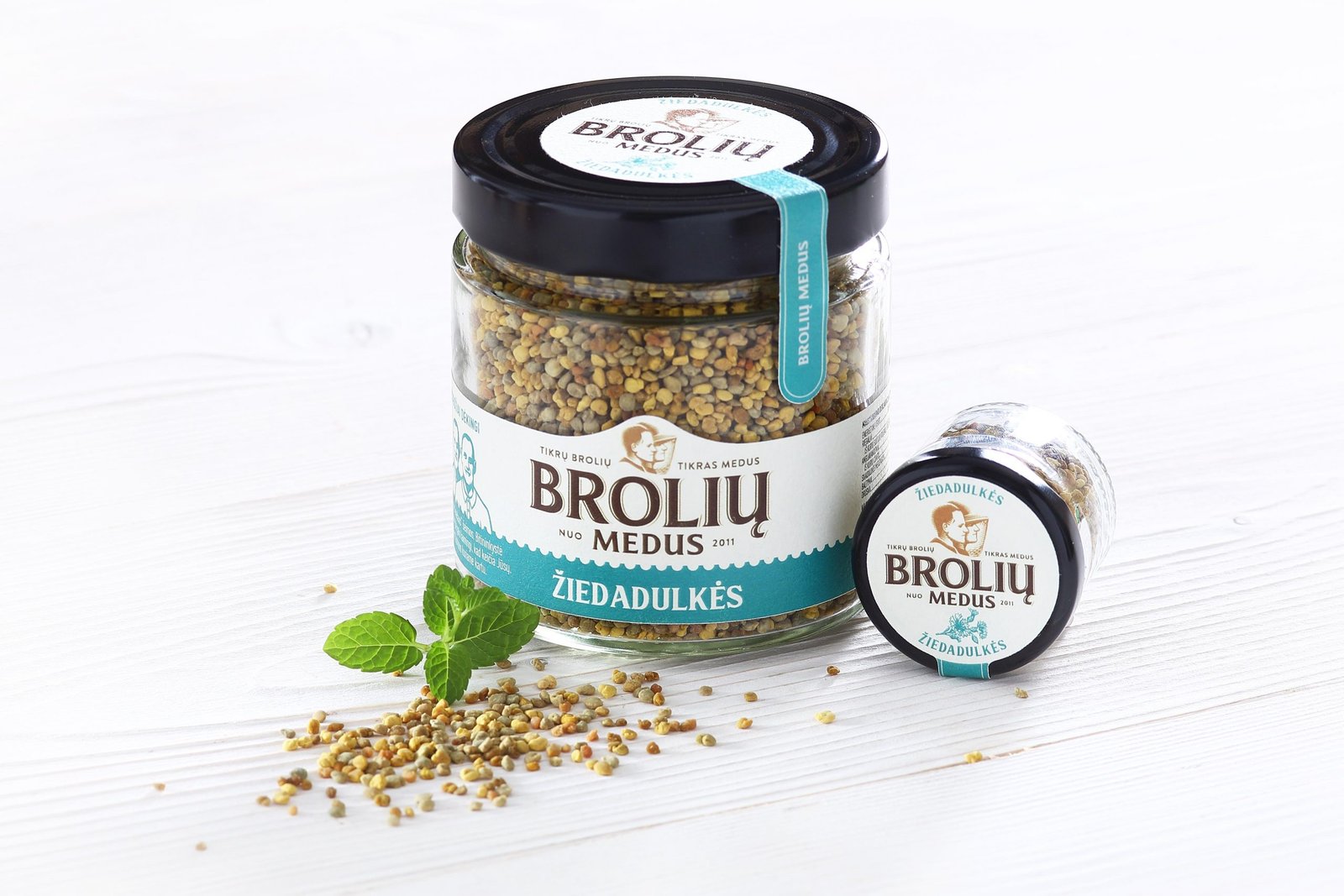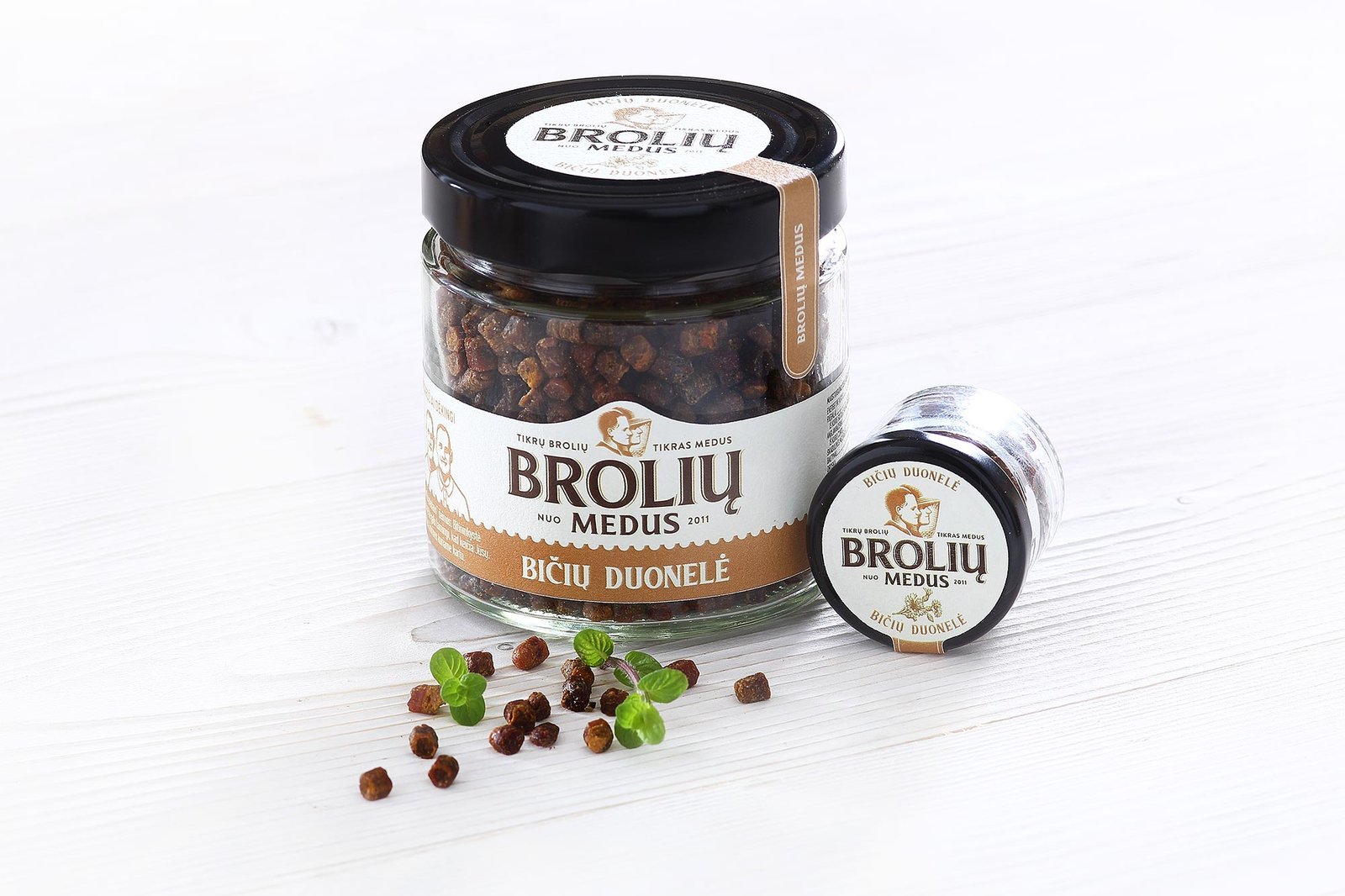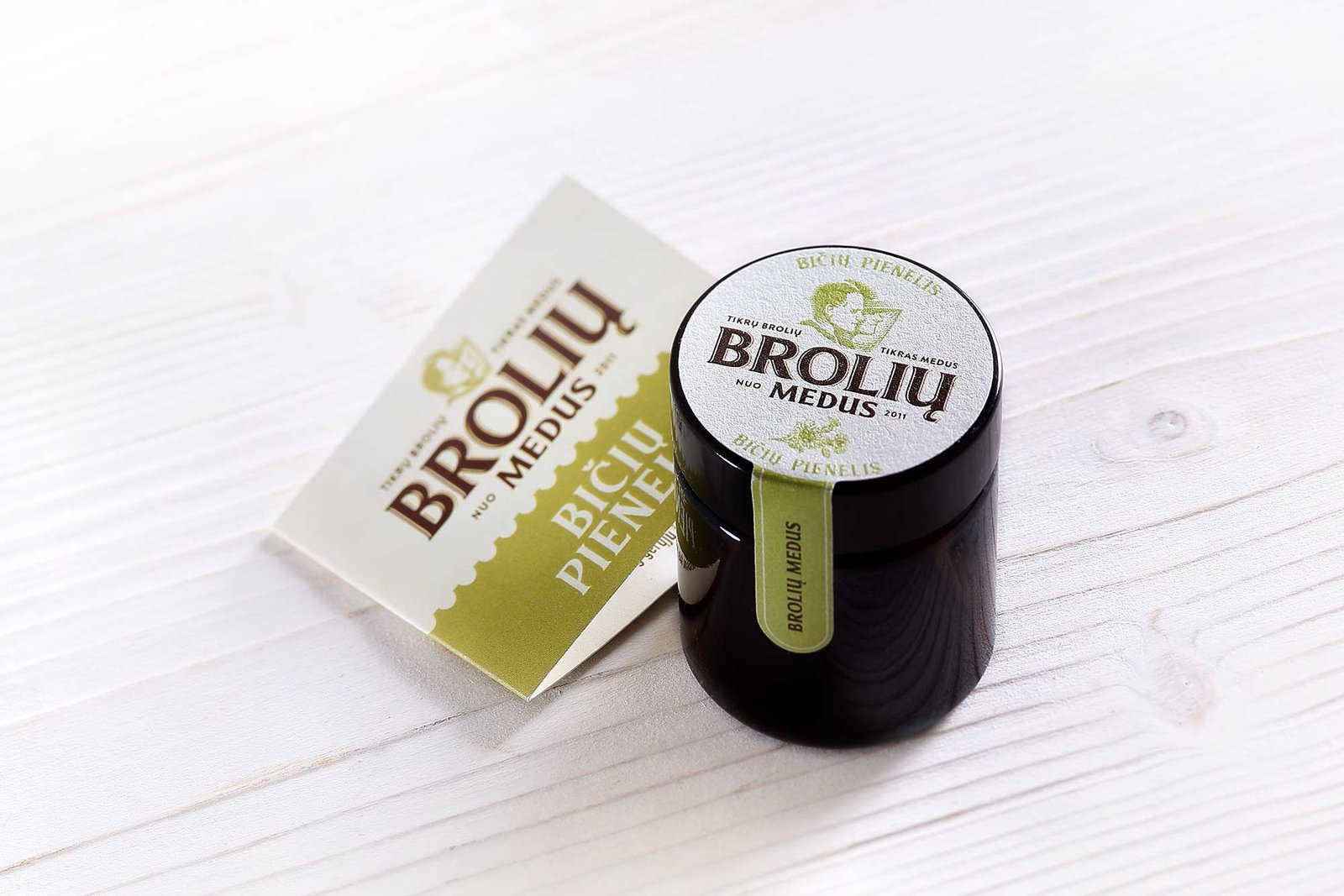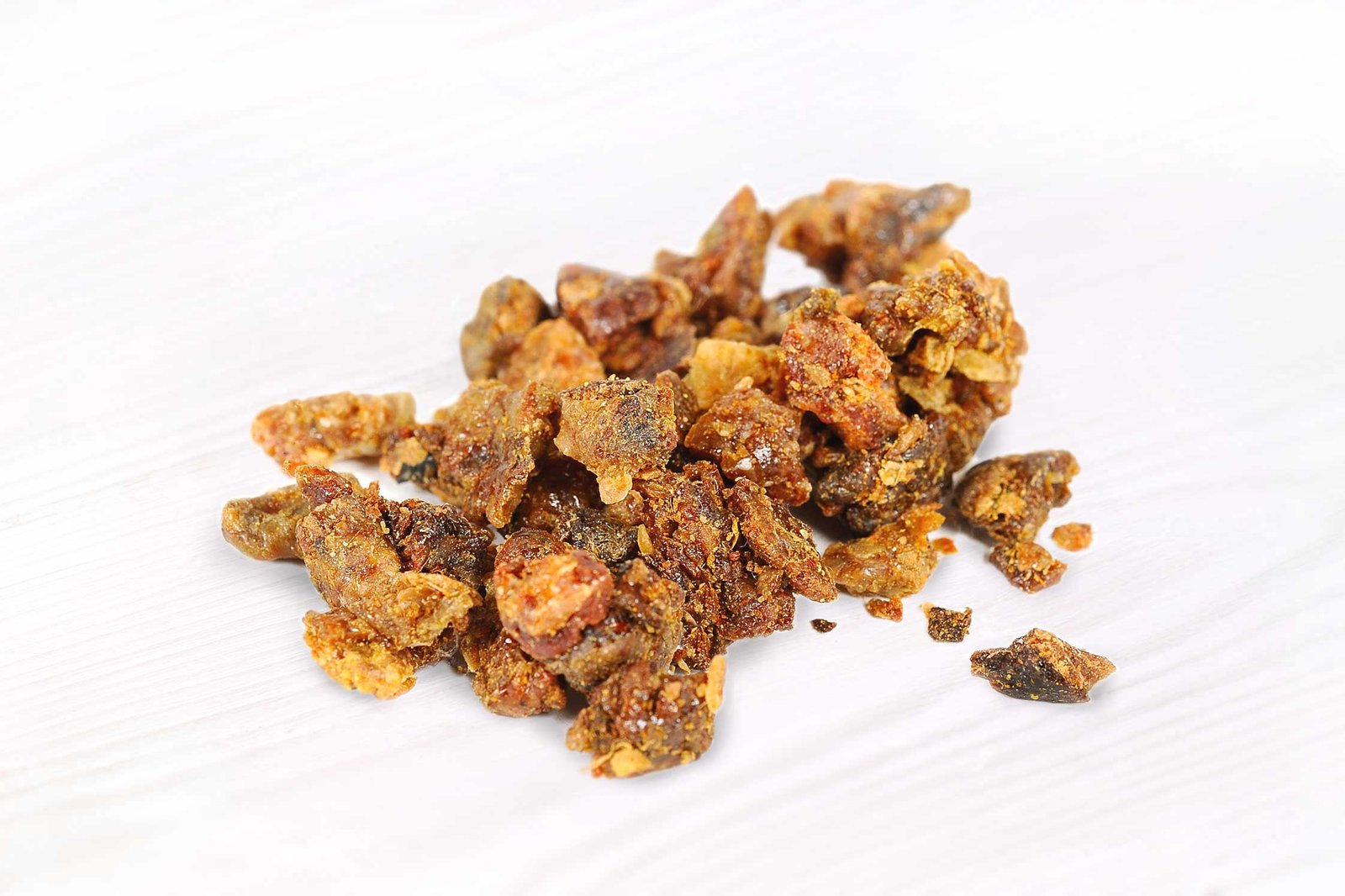Bee bread is a truly remarkable bee product.
What should everyone know about bee bread?
We have prepared a comprehensive article in which you will find out:
- What bee bread is made of and how it is made
- The benefits of bee bread consumption
- How to consume bee bread
- The price of bee bread
- The shelf life of bee bread
Happy reading, and if you need any advice – we’ll be waiting for your call, message or email.
Quick facts
| Composition of bee bread (%)
Protein Fat Carbohydrate Vitamins and minerals pH |
23 % 3 % 24 – 35 % 3 % ~4,3 |
| Vitamins and minerals in various proportions | C, B1, B2, E, K, B7, B9, B3, Fe, Ca, P, K, Cu, Zn, Se, Mg. |
| Benefits of bee bread | Anti-inflammatory, antibacterial, cancer-fighting effects. |
| Consumption of bee bread | General recommendation: one teaspoon per day. |
| The shelf life of dried bee bread | Unlimited |
Where does bee bread come from?
Bee bread is made of compressed pollen that has been preserved (fermented) in honey. This bee product is called ‘bread’ because of the specific fermented flavour of dark bread. What is more, these small hexagonal granules really do look like miniature loaves of bread.
If you’ve ever seen a bee with yellow little bundles stuck to its feet, then you’ve seen the raw material for bee bread. Upon returning to the hive, the worker bee will pass this bundle on to other worker bees, who will place it inside a honeycomb cell for safekeeping. When the cell is packed to the brim with pollen, the bees pour the cell over with honey and seal it. Thus, safely preserved, the bee bread is matured for three weeks until it is ready to be eaten by both the bees and us.
While we can eat pizza, potatoes, meat, fruit, vegetables, and the list goes on, the bees don’t have much to choose from. Just don’t get the idea that they’re complaining – just the opposite. All through the summer, they make and store superfood for themselves, and then live off it in the winter. Some of these food stores consist of bee bread, while some consist of honey. If bee bread offers bees such incredible benefits, then it can safely be called a superfood. Just think about it: if the bees survive all of the winter’s sub-zero temperatures subsisting solely on these two foods, then they must really be special. Besides, bee bread is their only source of protein. Wouldn’t it be great if we didn’t need to go shopping the entire winter long and could get our energy simply from consuming bee bread?
How is bee bread harvested?
Beekeepers thresh bee bread, much like grain. Because it is quite warm inside the hive, the honeycomb containing the bee bread is warm itself, and the bread is rather soft. In order to remove the bread and separate it from the wax without disturbing its integrity, we cool the honeycomb and use special equipment to simply shake the bee bread out into containers. It is then dried at a low temperature (like in the hive) and finally packaged for delivery.
What does bee bread consist of?
Like any other organic substance, bee bread is composed of carbohydrates, protein, fats, minerals and vitamins. It mostly contains carbohydrates: glucose, fructose, sucrose and arabinose. Apart from carbohydrates, around a fifth of bee bread is composed of various amino acids. Bee bread also contains about 40 saturated and unsaturated fatty acids in small but critical proportions. Among them are omega-3 and omega-6 fatty acids, which are essential nutrients that we cannot produce ourselves and must get through our diet. Some of the more special properties of bee bread emerge from its polyphenols, flavonoids and polyphenolic acids.
Benefits of bee bread
Increasingly more scientists, both in Lithuania and abroad, are studying the benefits of bee bread. We’ll present a brief overview of their discoveries. The benefits of bee bread differ from those of bee pollen because the former is easier to digest and absorb. Besides, bee bread is a good option for both the young and the old because these vitamins of nature are appreciated by the little ones for their delicious taste, while the adults value its priceless properties.
Stimulates regeneration
Because of its rich composition, bee bread can help with avitaminosis and other diseases caused by vitamin deficiencies (anaemia or iron deficiencies), with injury, after severe blood loss or when recovering from physical traumas. It has a potent regenerative effect on all human cells.
Antibacterial effect
Bee bread has an antibacterial effect even on microorganisms that are resistant to antibiotics. This makes it a powerful natural antibiotic with no side effects. The enzymes and other organic compounds in bee bread interrupt the reproduction of microorganisms and help us fight various infections. Bee bread reinforces the defensive capacity of our immune system, providing the human body with critical support. Especially during the colder months.
Antioxidative effect
Scientists claim that because of its antioxidative effect, bee bread can contribute to fighting the damage done by free radicals and can also work as a preventive measure. It also has a positive effect on our microflora, helping us recover after a course of antibiotics. Including bee bread in our diet can stimulate or activate our immune system because its various components have a positive effect on the production and synthesis of blood components.
Studies show that bee bread has a positive effect on the concentration of glucose and lipids in our blood, helping protect us from chronic cardiovascular diseases. Scientists have not yet figured out how to consume bee bread in order to maximise its positive antioxidative effect.
Stimulates the central nervous system
Bee bread is recommended for those doing intellectual work or undergoing great stress because it helps physical recovery and has stress-reducing properties. Bee bread also stimulates the regeneration of the nervous system, improves concentration and memory. So, regular consumption of bee bread stimulates the regenerative properties of the central nervous system and all aspects of cognitive capacity.
Cancer-fighting effect
Scientists have established that bee bread is special because it has a negative (toxic) effect on cancerous cells, while having a positive effect on remaining cells. The actual mechanisms behind these phenomena have not yet been discovered, however, scientists continue to investigate the properties of bee bread and should have more answers before long.
How to consume bee bread?
How much to consume?
Because bee bread is considered a food and not medicine, no official recommendations for its consumption or dosage have been declared. Apitherapists recommend a teaspoon or a teaspoon and a half (~20 g) a day for adults. For children up to the age of 3, bee bread should be consumed more conservatively because of the possibility of allergic reactions (to pollen or honey). After the age of three, the general rule is to give the child as many granules a day as they have years to their name.
Is there a time of day when bee bread consumption is most effective?
Definitely not in the evening. Because it has energising properties, it is best to consume bee bread in the morning or before lunch.
How to consume bee bread for maximum absorption
The human body absorbs bee bread better than bee pollen. The more finely it is chopped up, the better it is absorbed, so we recommend dissolving a spoonful of bee bread in warm water mixed with a teaspoon of honey. If you prefer to eat your bee bread instead of drinking it, chew it as well and as slowly as possible, holding it in your mouth a little before swallowing it. Some of the carbohydrates will dissolve in your mouth resulting in a pleasant flavour as well as a boost of energy. So give it a go instead of a cup of coffee.
Just like with any natural product, the benefits of bee bread will not make themselves felt at lightning speed. Only consistent consumption can produce the positive results we have described above. For more rapid recovery after illness or physical trauma, you can consume double the recommended daily dose (~40 g) for several weeks. It is important not to forget that you cannot overdose with bee bread, but eating it by the handful will not produce a better result because your body simply cannot absorb and store all the essential nutrients in time, so the majority of the nutrients will simply be passed. So, if you want the most impact, consume bee bread consistently and in moderation, sometimes taking breaks of a month or two.
What is the optimum price of bee bread?
The price of bee bread is dependent on both market trends and where it’s from, how organic it is, etc. Because the properties of bee bread depend on the plants it was harvested from as well as a suitable drying temperature, all bee bread available for purchase was not made equal. Bee bread dried in high temperatures loses some of its nutrient value. Only the bee-keeper can tell you where their bee bread was collected and where it was dried and stored.
Before it was popular, about a decade ago, the price of dried bee bread per kg was just ~50 LTL. Now that it is gaining greater popularity every year with exposure through TV shows and mass education, the price of bee bread is also growing. Several years ago, it cost ~30 €/kg. The price of bee bread in 2021, in part due to the pandemic, rose to ~ 60€/kg. Find the price of our bee bread at our e-shop.
Shelf life and storage of bee bread
In order to make bee bread have an almost limitless shelf life, beekeepers dry it. The shelf life of bee bread is several years. Of course, only if you make it so long without consuming it all. As with most food products, we recommend keeping it at room temperature.
For us, bee bread that hasn’t been dried is the most delicious. This kind of bee bread should be kept in the fridge during periods of consumption, and in the freezer when it is not being consumed. This will keep it fresh and supple.
Our most popular bee products:
Bee pollen
€2.15 – €6.70Bee bread
€2.70 – €14.80
Scientific sources:
- Mărgăoan R, Stranț M, Varadi A, et al. Bee Collected Pollen and Bee Bread: Bioactive Constituents and Health Benefits. Antioxidants (Basel). 2019;8(12):568. Published 2019 Nov 20. doi:10.3390/antiox8120568
- Urcan, Adriana & MARGHITAS, Liviu & Dezmirean, Daniel & Bobis, Otilia & BONTA, Victorita & Mureşan, Carmen & Mărgăoan, Rodica. (2017). Chemical Composition and Biological Activities of Beebread – Review. Bulletin of University of Agricultural Sciences and Veterinary Medicine Cluj-Napoca. Animal Science and Biotechnologies. 74. 6. 10.15835/buasvmcn-asb:12646.

